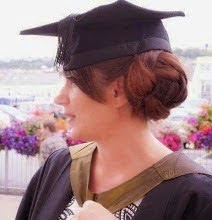Education was changing when I was in compulsory education just a few decades (cough, cough) ago. We had the choice between typing class or computer class, I opted for the later much to all my class mates amusement. Comments such as "we will never use it in work" "What's the point of it?" and "it will never take off" still make me laugh, and most of them were from staff. The computer or I T teacher was not very clued up either if I am being honest.
Modern day education is technology driven and vice versa, but do the barriers that existed when I was a child still persist? Going back into education after a long gap did provide me with an ability to contrast the old view of technology in education and the new view.
It is clear to see that while the number of computers in the classrooms increase that there is now tremendous support for technology integration within academia, a major discrepancy exists between the level of technology which is expected of educators to be used and the actual use and integration of technology in the classroom Semary,(2011)
I must admit through my own experiences of teaching in higher education it has been very difficult for me as an educator to involve technology. The students know they are READING for a degree, now if that reading takes place on a mobile device through the use of pdf's or online journals great, but as an educator I cant really incorporate technology in to my lessons. How can a lecture be made more interactive? Ramey, (2013) discusses one of the barriers as being lack of innovation and I agree, I feel clueless as how to integrate technology into my teaching. Using technological tools requires a certain degree of creativity and I don't feel I am creative enough, I have basic understanding of most applications. The issue with technology is that is fast moving and changes hourly sometimes, through updates and newer versions, it is easy to see how those who are not so technology savvy can easily shy away from using technology in the classroom.
Now don't get me wrong I am all for technology in classrooms, I can see how my children are far more advanced than me when it comes to anything technological, but it must be said their are a lot of educators out there who lack the ability to use technology in education. As I have said it takes creativity to integrate technology into the curriculum and there does seem to a resistance to change attitude from old school educators, Kappan, (2009).
The issue of access to technological tools is a great barrier for many educational establishments. The cost of installing and maintaining smart boards and projectors in each class is a real concern, the black bored would have one cost and not much upkeep, but in comparison the technology is updated constantly, and when damaged or broken can be very costly. Take for example the cost of being connected to internet servers and running a virtual learning environment, it is expensive and requires constant up keep. Schools and colleges have tight budgets and this must be factored in when considering the pro's and con's of technology in education. Many generations have been taught without the use of modern technology and this has been successful.
The list of barriers to the effective use of technology in education goes on and on, but I have given you a flavour of the ones I think are the toughest to face, without capital the technology cant be installed or utilized, without educators being willing to adapt and change their practises, and without educators being able to think outside of the box and be creative in the use of technology for education, this debate will keep going round and round. I will be looking at my own barriers closely from now on, and use reflective practise to ensure I am giving my students the best chance possible to have technology integrated into their education.
References.
Kappan, P. (2009). What Can We Do About. Available: http://www.updc.org/assets/files/professional_development/umta/blue-guild/Coaching%20-%20Teacher%20Resistance.pdf. Last accessed 20/11/2014.
Ramey K. (2013 ). Barriers To The Effective Use of Technology In Education. Available: http://www.useoftechnology.com/barriers-effective-technology-education/. Last accessed 20/11/2014
Semary, H. (2011 ). Barriers to the effective use of technology in education: Case study of UAE University. Available: http://library.iated.org/view/ELSEMARY2011BAR. Last accessed 20/11/2014
My ramblings upon my experiences through the next stage of my life.. TEACHER TRAINING!!!!!
About Me

- Sarah
- I am plain spoken and say what I see, this gets me into a lot of trouble, I am kind and generous beyond normal sometimes and care deeply about my environment and world, my two sons keep me busy and focused most of the time and I have a very busy social network filled with some of the most amazing people possible. I am a student who wishes to teach other adults one day and hope to be successful in transforming individuals one at a time. I am a bahai and a very spiritual being.
Wikipedia
Search results
Tuesday, 4 November 2014
Barriers to the effective use of technology in education.
Labels:
Academic Assignment,
barriers,
cost,
creative,
Innovative,
lack,
Technology
Subscribe to:
Post Comments (Atom)
A well informed piece, I like your style and the presentation is good too.
ReplyDelete